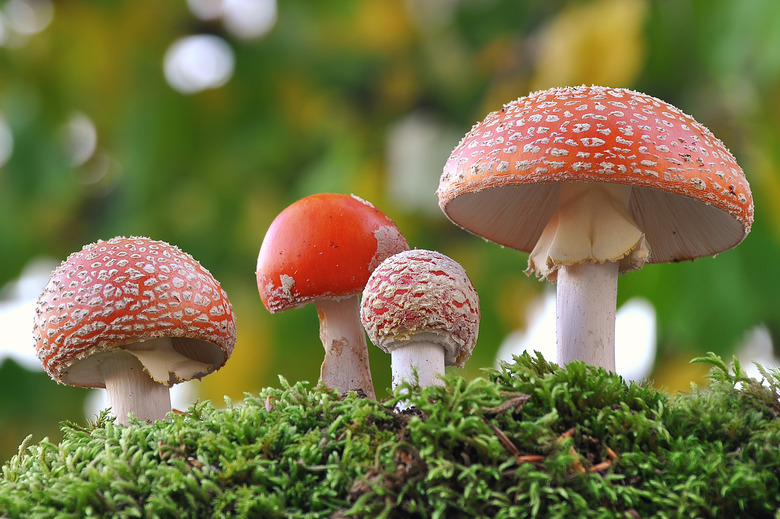Characteristics Of The Six Kingdoms Of Organisms
From the tiniest bacterium to the largest blue whale, all living organisms are classified by their characteristics. The biologist Carolus Linnaeus first grouped organisms into two kingdoms, plants and animals, in the 1700s. However, advances in science such as the invention of powerful microscopes have increased the number of kingdoms. There are now six commonly accepted kingdoms. Each kingdom includes a set of organisms that share similar characteristics. The organisms in each Kingdom are considered biologically distinct from the others. The six Kingdoms are: Archaebacteria, Eubacteria, Fungi, Protista, Plants and Animals.
Archaebacteria
Archaebacteria
Archaebacteria are the most recent addition to the kingdoms of organisms. Their existence was not discovered until the 1980s. However, Archaebacteria are the oldest known living organisms. They are single-celled and thrive in extremely hot boiling water found in environments like volcanic thermal vents in the ocean and hot springs like the geysers at Yellowstone Park. Some species also live in very salty environments such as The Dead Sea and The Great Salt Lake.
Eubacteria
Eubacteria
Eubacteria are also single-celled bacterial organisms. This kingdom makes up most of the bacteria in the world. Eubacteria are very common and well-known to us as parasites like Streptococci which causes strep throat. However, these bacteria also help produce many antibiotics, vitamins and yogurt.
Fungi
Fungi
The Fungi kingdom is recognizable to us as mushrooms, molds, mildews and yeasts. Unlike the organisms in the Archaebacteria and Eubacteria kingdoms, Fungi are multi-celled organisms. Early scientists classified mushrooms and other fungi in the Plant kingdom but they do not produce their own food as plants do.
Protista
Protista
Protista or Protozoa are single-celled organisms, but are more complex than single-celled bacteria. The Protista kingdom includes algae and slime molds. Any microscopic organism that does not fall into the bacterial, fungi, plant or animal kingdoms is considered a part of the Protista kingdom.
Plants
Plants
The Plant or Plantae kingdom encompasses all flowering plants, mosses and ferns. Plants are multi-celled, complex organisms and are considered Autotrophic. This means that plants create their own food through photosynthesis. The Plant kingdom is thought to be the second largest with over 25,000 known species.
Animals
Animals
The largest kingdom of organisms is the Animal or Animalia kingdom. This kingdom is made up of complex, multi-celled organisms ranging from sea sponge colonies to elephants. All organisms in the Animal kingdom are Heterotrophs meaning, unlike plants which produce their own food, animals feed upon other organisms. The Animal kingdom is the world's largest with over one million known species.
Cite This Article
MLA
Gillespie, Mark. "Characteristics Of The Six Kingdoms Of Organisms" sciencing.com, https://www.sciencing.com/characteristics-six-kingdoms-organisms-8242194/. 13 March 2018.
APA
Gillespie, Mark. (2018, March 13). Characteristics Of The Six Kingdoms Of Organisms. sciencing.com. Retrieved from https://www.sciencing.com/characteristics-six-kingdoms-organisms-8242194/
Chicago
Gillespie, Mark. Characteristics Of The Six Kingdoms Of Organisms last modified March 24, 2022. https://www.sciencing.com/characteristics-six-kingdoms-organisms-8242194/
